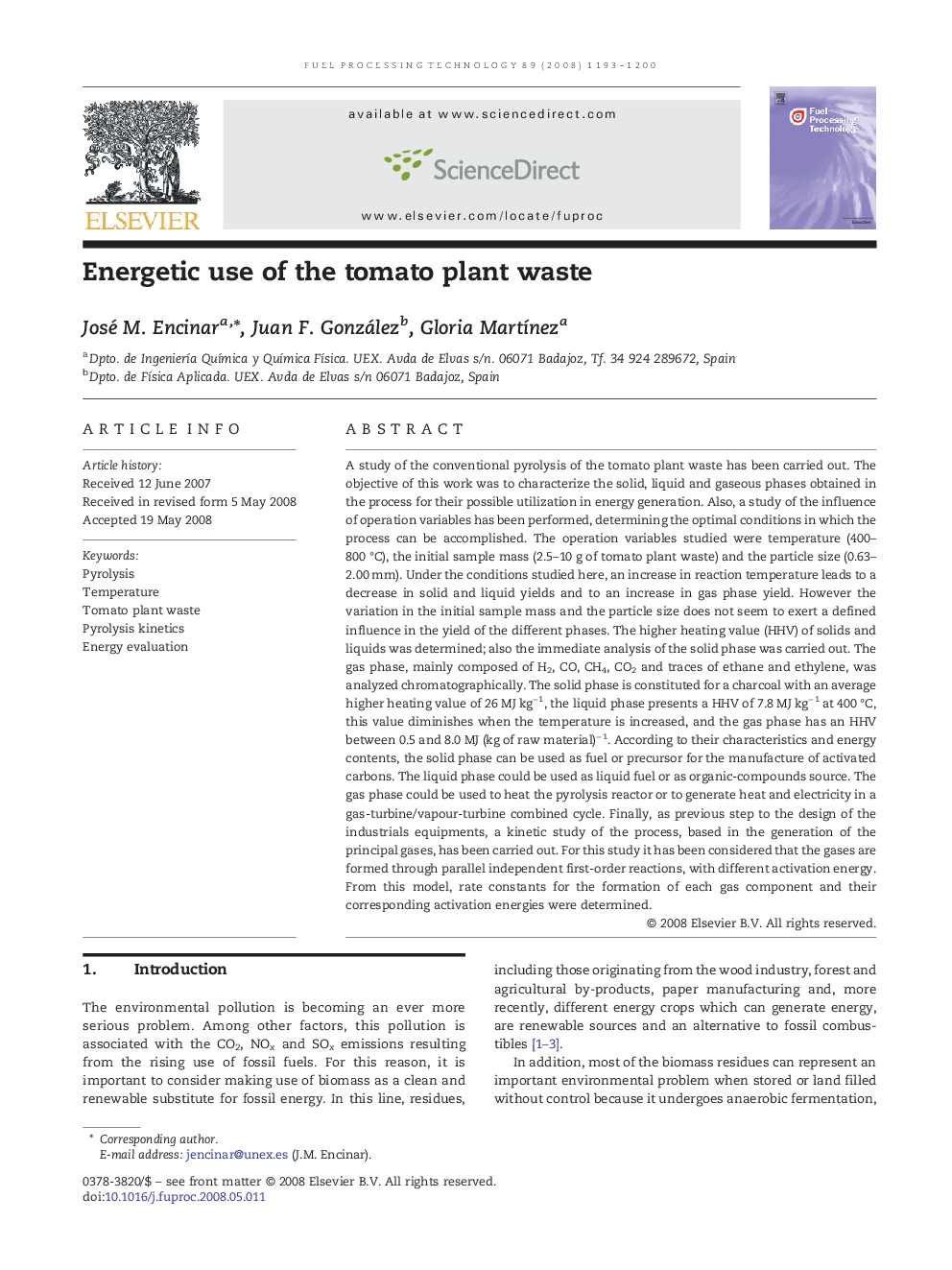| کد مقاله | کد نشریه | سال انتشار | مقاله انگلیسی | نسخه تمام متن |
|---|---|---|---|---|
| 211446 | 461764 | 2008 | 8 صفحه PDF | دانلود رایگان |

A study of the conventional pyrolysis of the tomato plant waste has been carried out. The objective of this work was to characterize the solid, liquid and gaseous phases obtained in the process for their possible utilization in energy generation. Also, a study of the influence of operation variables has been performed, determining the optimal conditions in which the process can be accomplished. The operation variables studied were temperature (400–800 °C), the initial sample mass (2.5–10 g of tomato plant waste) and the particle size (0.63–2.00 mm). Under the conditions studied here, an increase in reaction temperature leads to a decrease in solid and liquid yields and to an increase in gas phase yield. However the variation in the initial sample mass and the particle size does not seem to exert a defined influence in the yield of the different phases. The higher heating value (HHV) of solids and liquids was determined; also the immediate analysis of the solid phase was carried out. The gas phase, mainly composed of H2, CO, CH4, CO2 and traces of ethane and ethylene, was analyzed chromatographically. The solid phase is constituted for a charcoal with an average higher heating value of 26 MJ kg− 1, the liquid phase presents a HHV of 7.8 MJ kg− 1 at 400 °C, this value diminishes when the temperature is increased, and the gas phase has an HHV between 0.5 and 8.0 MJ (kg of raw material)− 1. According to their characteristics and energy contents, the solid phase can be used as fuel or precursor for the manufacture of activated carbons. The liquid phase could be used as liquid fuel or as organic-compounds source. The gas phase could be used to heat the pyrolysis reactor or to generate heat and electricity in a gas-turbine/vapour-turbine combined cycle. Finally, as previous step to the design of the industrials equipments, a kinetic study of the process, based in the generation of the principal gases, has been carried out. For this study it has been considered that the gases are formed through parallel independent first-order reactions, with different activation energy. From this model, rate constants for the formation of each gas component and their corresponding activation energies were determined.
Journal: Fuel Processing Technology - Volume 89, Issue 11, November 2008, Pages 1193–1200